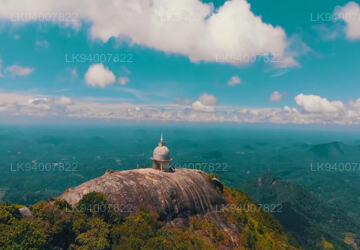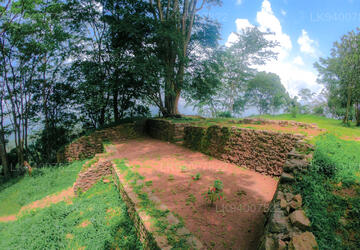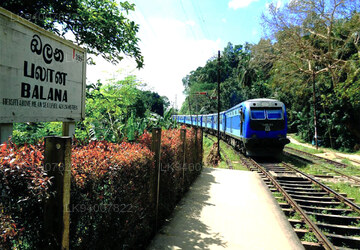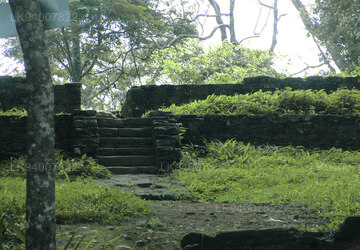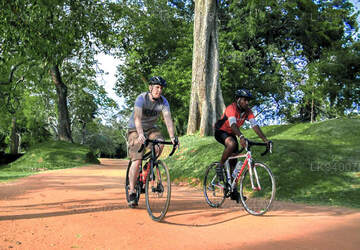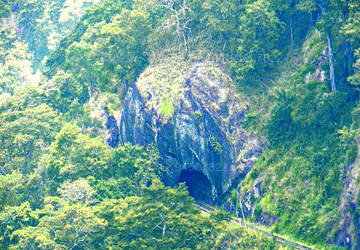
Kandy City
Kandy, a picturesque city in central Sri Lanka, is renowned for its rich cultural heritage, vibrant festivals, and scenic beauty. Nestled amidst lush hills, it is home to the Temple of the Tooth Relic, a UNESCO World Heritage Site, and offers a captivating blend of history and natural splendor.
バラナ
バラナについて
バラナはスリランカのキャンディ郊外にあります。岩の要塞として人気のバラナ。コロンボ-キャンディ鉄道線の近くに位置しています。
バラナ要塞、アラガラ山脈はバラナの近くにある有名な観光スポットです。
バラナ フォート
バラナ要塞は、外国勢力からシンハラ王国を守るためにキャンディ王国によって設立された主要な要塞であり、カドゥガンナワ峠とアラガラ山脈の間に位置しています。バラナ砦は現在、スリランカ考古学局が管理する史跡となっている[4]。
アラガラ山脈
アラガラ山脈は、スリランカの中部州とサバラガムワ州の境界に位置しています。アラガラ山は、5 世紀近くにわたって自然の防御場所として機能してきました。彼の有名なバラナ要塞は、戦略的な岩の要塞であり、キャンディアン王国への前哨基地として機能し、カドゥガンナワ峠[1]とアラガラ山脈の間に建設されました。アトラクション。冒険ハイキングの目的地として人気のアラガラ山。
キャンディ地区について
キャンディ地区はスリランカの中部州に位置します。スリランカにある 7 つの世界遺産の 1 つであるキャンディは、かつて 16 世紀にキャンディ王の本拠地であり、国内のあらゆる音楽、芸術、工芸、文化の源でした。コロンボから約 129 km 離れたキャンディは、丘陵地帯に囲まれており、魅力的な特徴を形成するキャンディ湖が街の中心部に注目を集めています。キャンディはスリランカにとって宗教的に大きな重要性を保っています。なぜなら、この魅力的な都市にはダラダ マーリガワ、つまり「歯の寺院」があり、その中に仏陀の神聖な歯の遺物が厳重に守られているからです。
ペラデニヤ王立植物園は、ペラデニヤの市内中心部から西に約 5 km に位置し、年間 120 万人が訪れます。島内最大の植物園です。ウダワッタ ケレ (ウダワッタの森) は、ダラダー寺院のすぐ北、市の中心部に位置する保護された聖域です。
キャンディはシンハラ人が多数を占める都市です。ムーア人やタミル人など、他の民族グループに属する大きなコミュニティもあります。キャンディはコロンボに次ぐスリランカ経済の中心地です。多くの主要な協同組合がキャンディに大規模な支店役員を置き、繊維、家具、情報技術、宝飾品などの多くの産業がここにあります。市内には多くの農業研究センターがあります。
中部州について
スリランカ中部州は主に山岳地帯で構成されています。州の面積は 5,674 km²、人口は 2,421,148 人です。主要な町としては、キャンディ、ガンポラ(24,730)、ヌワラ エリヤ、バンダラウェラなどがあります。人口はシンハラ人、タミル人、ムーア人の混合です。
丘陵地帯の首都キャンディとヌワラ エリヤ市は、スリ パダと同様に中部州内に位置しています。この州は、壊滅的な病気によって州内のすべてのコーヒー農園が壊滅した後、1860年代にイギリス人によって植えられた有名なセイロン茶の多くを生産しています。中部州には、キャンディ、ガンポラ、ハットン、ヌワラエリヤなどの丘陵地帯の町があり、多くの観光客が集まります。こめかみの歯、またはダラダ マリガワは、セントレル州の主な神聖な場所です。
気候は冷涼で、標高1500メートル付近の地域では夜が冷え込むことが多いです。西側の斜面は非常に湿っており、年間降水量が 7000 mm 近くに達する場所もあります。東斜面は北東モンスーンからのみ雨が降るため、中乾燥地帯の一部です。気温はキャンディの 24 °C から、海抜 1,889 m に位置するヌワラ エリヤのわずか 16 °C までです。スリランカの最高峰は中部州にあります。地形はほとんどが山地で、深い谷が切れ込んでいます。 2 つの主要な山地は、中央山塊とキャンディ東のナックルズ山脈です。
About Kandy District
Kandy district is situated in the centrel province of Sri Lanka. One of the seven World Heritage Sites in Sri Lanka, Kandy was once home to the Kandyan Kings of yore in the 16th-century and a fountainhead for all the music, arts, crafts and culture in the country. About 129 km away from Colombo, Kandy is ensconced amongst a hilly terrain and all eyes are drawn to the centre of the city, where the Kandy Lake forms a charming feature. Kandy retains great religious significance for Sri Lanka, because it is in this charming city that the Dalada Maligawa or "Temple of the Tooth" is located, within which the sacred tooth relic of Lord Buddha lies well guarded.
The Royal Botanical Garden, Peradeniya is situated about 5 km to the west of the city centre at Peradeniya and is visited by 1.2 million people per year. It is the largest botanical garden on the island. The Udawatta Kele (Udawatta Forest) is a protected sanctuary situated in the heart of the city, just north of Temple of the Tooth.
Kandy is a Sinhala majority city; there are sizeable communities belonging to other ethnic groups, such as Moors and Tamils. Kandy is second only to Colombo the center of the Sri Lankan Economy. Many major co operations have large branch officers in Kandy and many industries include textiles, furniture, Information Technology and jewellery are found here. Many agriculture research centers are located in the city.
And a fountainhead for all the music, arts, crafts and culture in the country. About 129 km away from Colombo, Kandy is ensconced amongst a hilly terrain and all eyes are drawn to the centre of the city, where the Kandy Lake forms a charming feature. Kandy retains great religious significance for Sri Lanka , because it is in this charming city that the Dalada Maligawa or Temple of the Toothis located, within which the sacred tooth relic of Lord Buddha lies well guarded.
About Central Provincce
The Central Province of Sri Lanka consists primarily of mountainous terrain. The province has an area of 5,674 km², and a population of 2,421,148. Some major towns include Kandy, Gampola (24,730), Nuwara Eliya and Bandarawela. The population is a mixture of Sinhalese, Tamil and the Moors.
Both the hill capital Kandy and the city of Nuwara Eliya are located within the Central Province as well as Sri Pada. The province produces much of the famous Ceylon tea, planted by the British in the 1860s after a devastating disease killed all the coffee plantations in the province. Central Province attracts many tourists, with hill station towns such as Kandy, Gampola, Hatton and Nuwara Eliya. Temple tooth or Dalada maligawa is the main sacred place in Centrel province.
The climate is cool, and many areas about 1500 meters often have chilly nights. The western slopes are very wet, some places having almost 7000 mm of rain per year. The eastern slopes are parts of the mid-dry zone as it is receiving rain only from North-Eastern monsoon. The Temperatures range from 24°C at Kandy to just 16°C in Nuwara Eliya, which is located 1,889 m above sea level. The highest mountains in Sri Lanka are located in the Central Province. The terrain is mostly mountainous, with deep valleys cutting into it. The two main mountain regions are the central massif and the Knuckles range to the east of Kandy.

